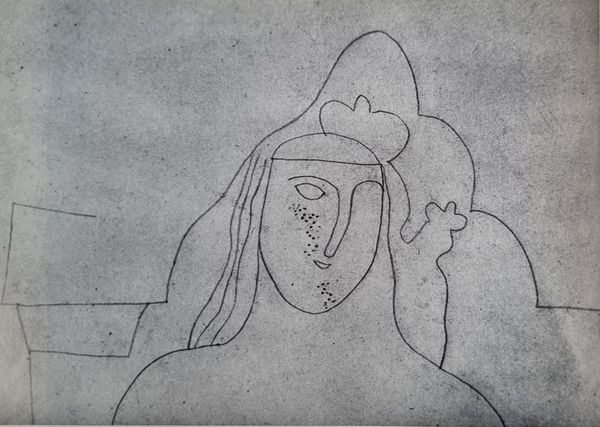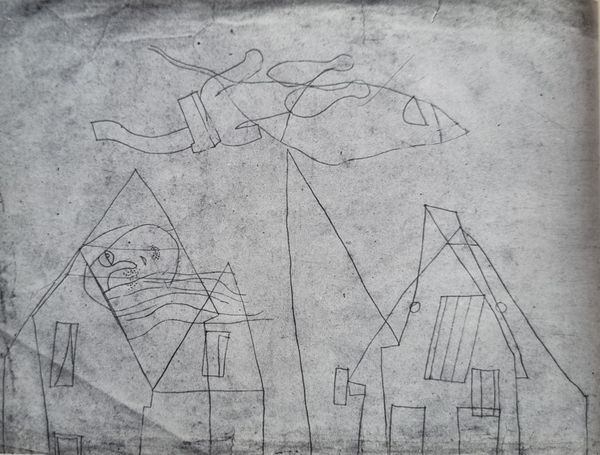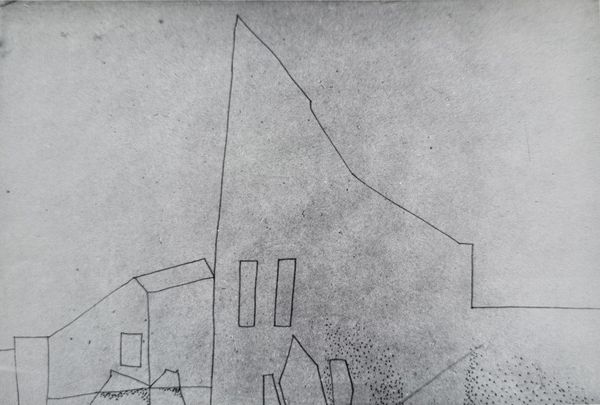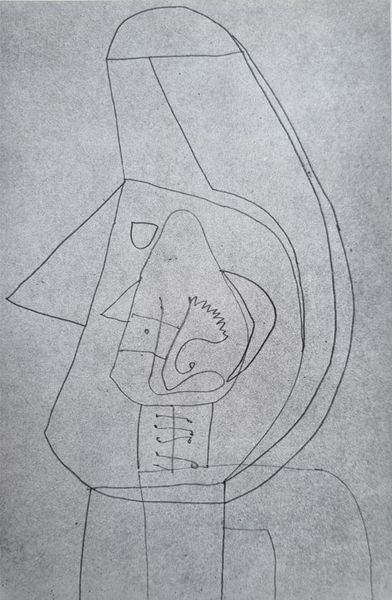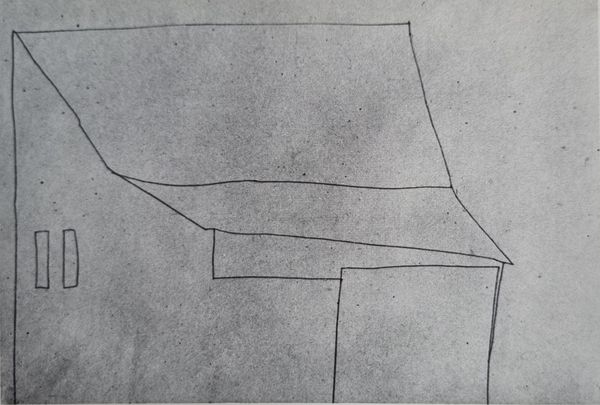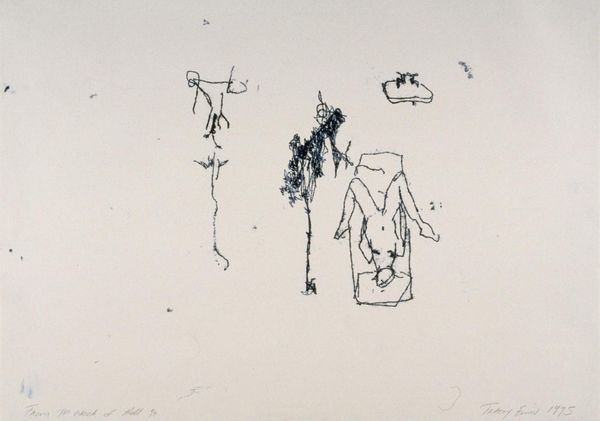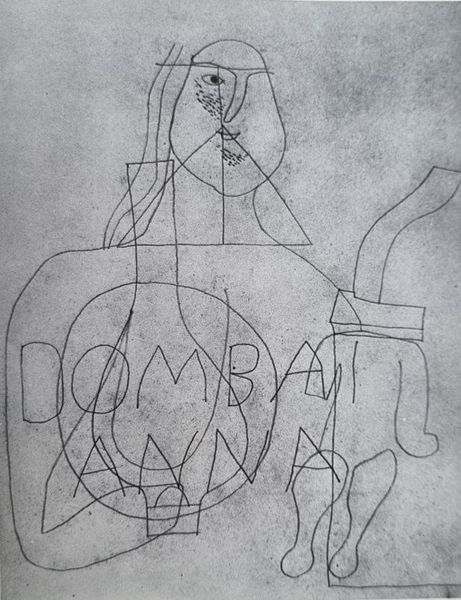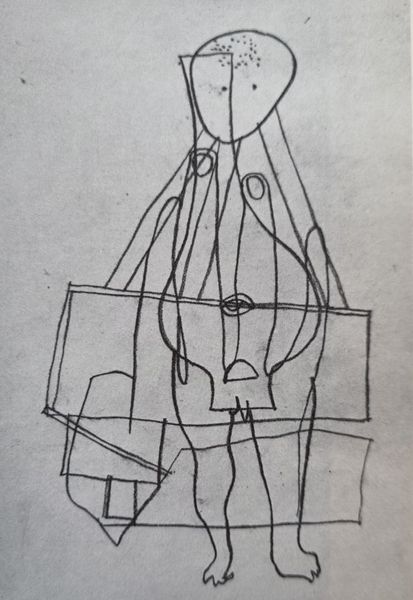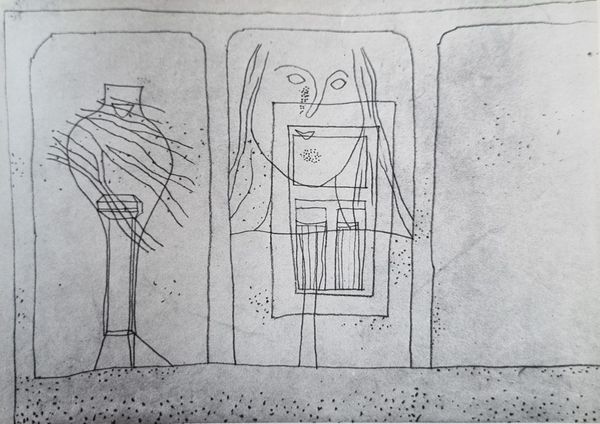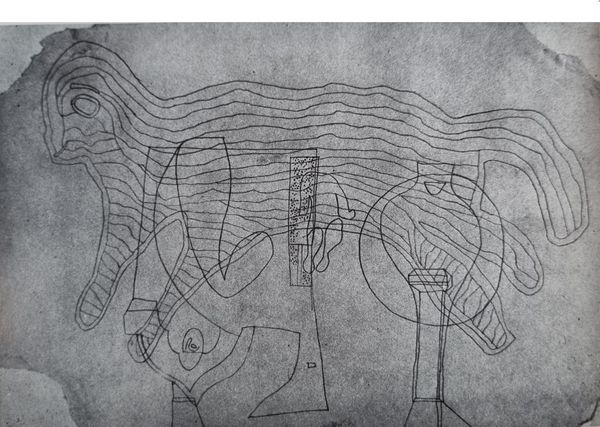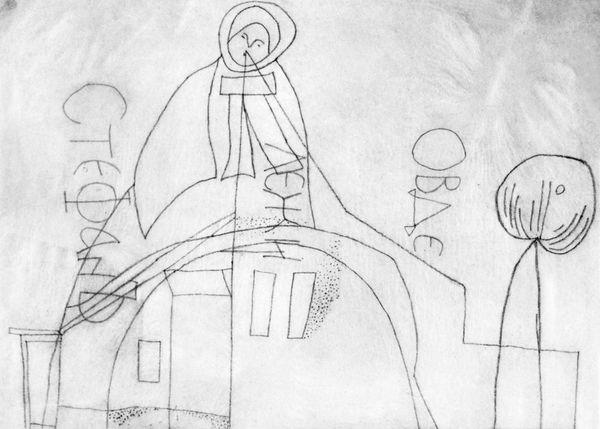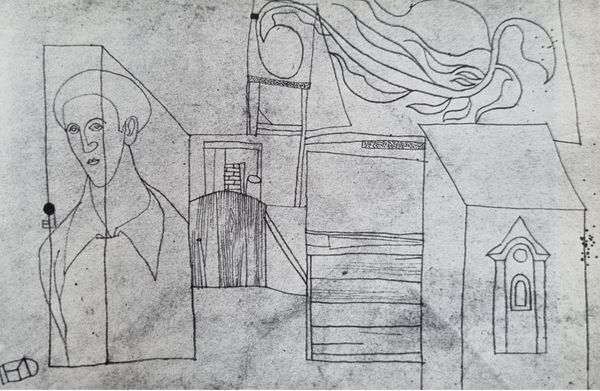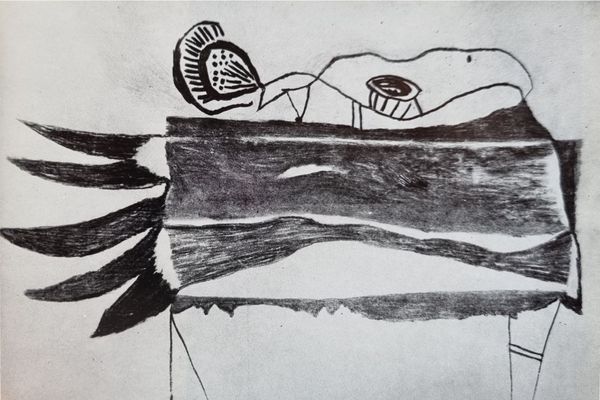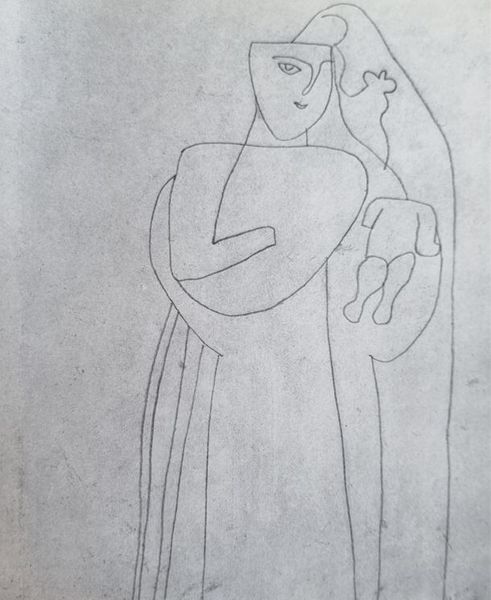
drawing, paper
#
drawing
#
quirky sketch
#
incomplete sketchy
#
figuration
#
paper
#
personal sketchbook
#
idea generation sketch
#
sketchwork
#
expressionism
#
line
#
sketchbook drawing
#
fashion sketch
#
sketchbook art
#
fantasy sketch
#
initial sketch
Copyright: Public domain
Vajda Lajos made this etching of a peasant woman in 1935. Etching, of course, is an indirect printmaking process: the artist protects a metal plate with a waxy "resist," then scratches through it to expose the metal, which is then eaten away in an acid bath. What's interesting here is the apparent simplicity of the image. But this belies a whole history of skilled labor. It wasn't just a matter of drawing on a plate, but understanding the chemistry involved, judging the duration of the acid bath, and finally, carefully inking and printing the plate. And what about the subject of the image? Consider the labor involved in the woman's daily life – the physical demands of farm work. Here, it's all distilled to a few lines. Vajda brings these worlds together: the skilled work of the printmaker, and the hard work of the peasant. This piece prompts us to think about labor, class, and the many forms of making that shape our world.
Comments
No comments
Be the first to comment and join the conversation on the ultimate creative platform.
